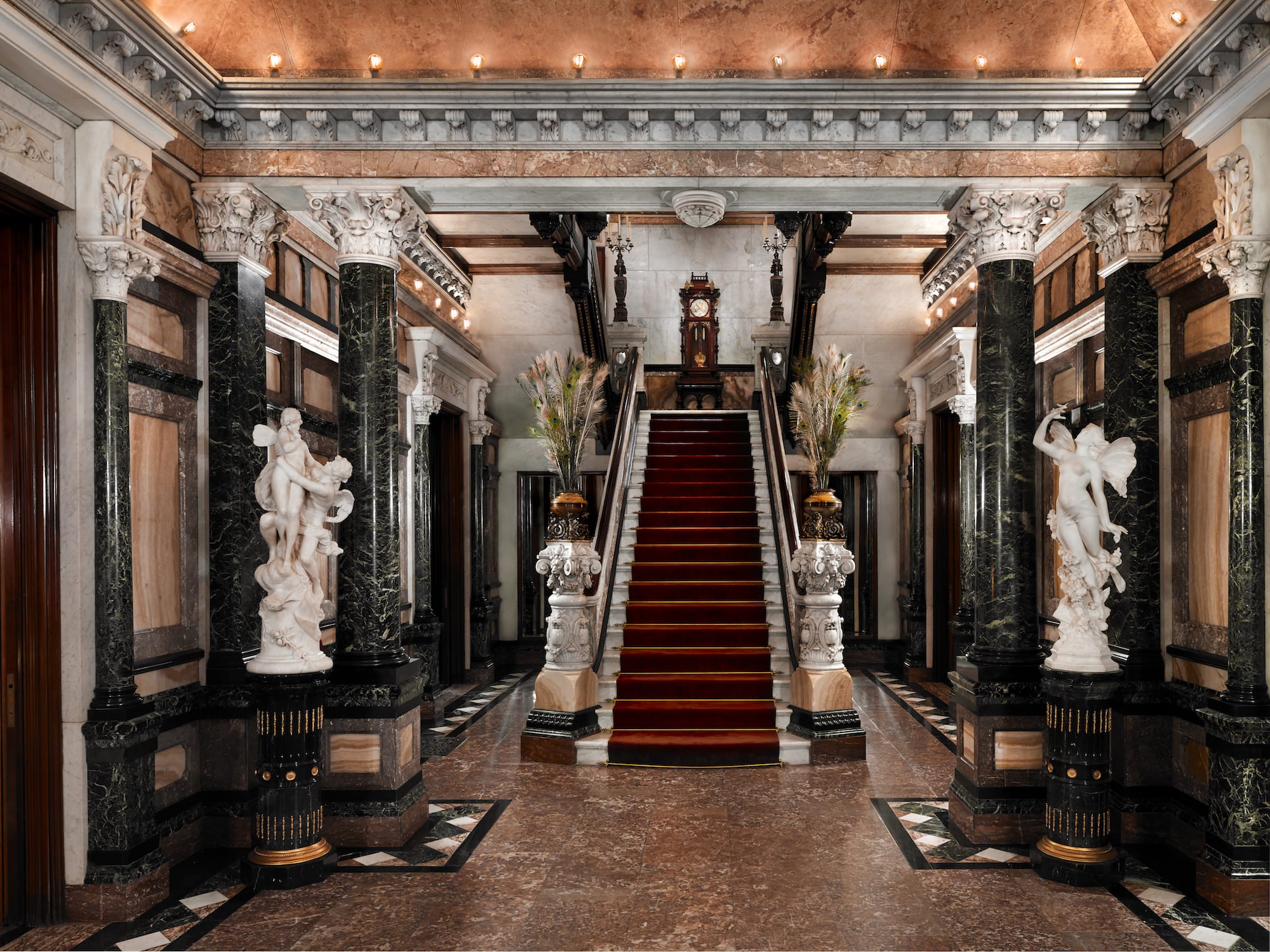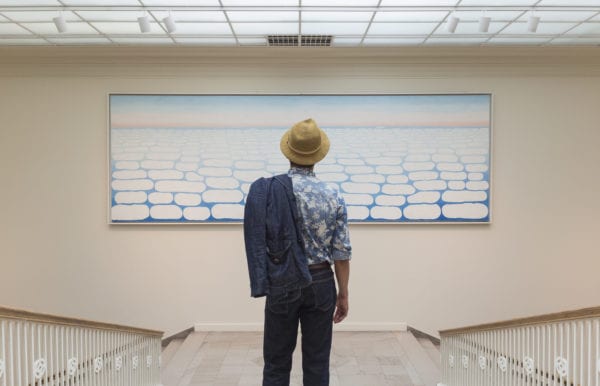
Berthold Löffler (Austrian, 1874-1960), The Wiener Werkstätte (Austrian, established 1903), Hostess Pin, c. 1907. Collection of Richard H. Driehaus. Photograph by John A. Faier.
If you bought your significant other any jewelry from Etsy for Valentine’s Day you can thank the early-20th century art jewelry movement, and the Driehaus Museum is highlighting the movement in their second exhibition.
“Maker & Muse: Women and Early Twentieth Century Art Jewelry” not only explores the resistance against mass production brought on by the Industrial Revolution but the way women were an integral part of that handcrafted jewelry movement. The museum highlights more than 250 ravishing items that include extremely intricate rings, pendants, necklaces, brooches, tiaras, and even cigarette holders.

René Lalique (French, 1860-1945), Winged Sylph Brooch, c. 1900. Collection of Richard H. Driehaus. © 2014 Artists Rights Society (ARS), New York / ADAGP, Paris. Photograph by John A. Faier.
The exhibit is spread out through the second-floor galleries and divided by region. Start out in Britain, the foundation of art jewelry, where husband and wife teams were making these beautiful pieces that were inspired by nature as well as the changing social norms. The green, white, and violet in Child & Child’s gold, amethyst, pearl, and diamond suffragist necklace is a perfect example of women’s influence. Head into a constant staple of the Driehaus Museum in the Louis Comfort Tiffany room where his beautiful art jewelry is featured and you’ll learn that two women were actually in charge as heads of his jewelry studio. While exploring the German and French rooms you wont see women as the artists but as the muses. One of the most beautiful examples is in René Lalique’s winged sylph brooch made out of freshwater pearl and enamel where Lalique shows one of his themes of combining a woman’s figure with a feature of an insect or other animal that can be interpreted as a fairy or might be interpreted as a form of eroticism, which was popular theme during the time.

The Kalo Shop (American, 1900-1970), Necklace, 1900. Collection of Neil Lane. Photograph by John A. Faier.
The Driehaus brings it back home with the Chicago room featuring items from the Kalo Shop that was run by Clara Barck Welles. Welles mentored many notable art jewelers and had many women, known as the “Kalo Girls,” work on designs. Her shop sat on Michigan Avenue until it closed in 1970 and produced countless beautiful pieces starting in 1914.
“Maker & Muse: Women and Early Twentieth Century Art Jewelry” will be on view until Jan. 3, 2016 at the Driehaus Museum located at 40 East Erie Street. For more information visit driehausmuseum.org/exhibitions/view/maker_muse.


